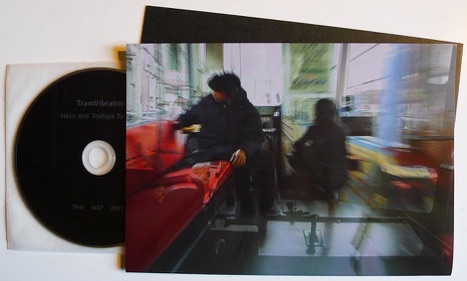tram vibrations

+ stereo bugscope 1 2 3
+ tram vibrations 1 2 3
+ view masters 1 2 3
+ sound bugscope workshop 1 2 3

The TramVibration Project
Toshiya Tsunoda and Haco
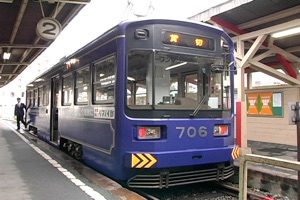
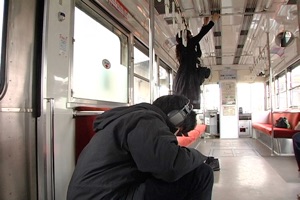
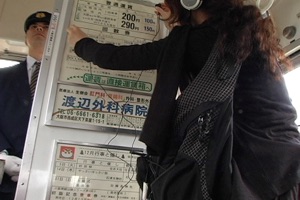
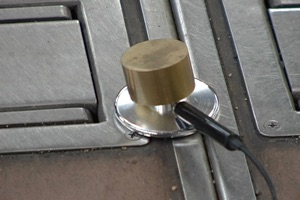
Date: December 28, 2006
Place: Inside a tram on a round trip from Ebisu-cho to Hamadera Ekimae on the Hankai Line (12:03 - 13:46) in Osaka, Japan
Toshiya Tsunoda captured solid vibrations using a piezo-ceramic sensor and a stethoscope,
and Haco used her "stereo bugscope" (two inductive microphones) system to catch electromagnetic sounds.
The first edition of work was used for the View Masters Osaka-Melbourne Remix Exhibition in Osaka in February 2007. (The video documentary for the exhibition 13:28)
The TramVibration Project
Toshiya Tsunoda + Haco
1. The idea behind the work
Tsunoda and Haco have admired each other's work for some time. Both of them thought it would be interesting to do a collaboration involving the observation and documentation of sound. The concept was to create environmental art with normally inaudible vibrations, and the tram seemed like the perfect location for the project.
2. The recording method
Tsunoda:
I used a piezo-ceramic sensor, and a stethoscope, which I inserted in the head of an ultra-compact, nondirectional microphone. Both microphones picked up solid vibrations.
Haco:
I used my "stereo bugscope" system (two inductive microphones, which have magnetic coils in them − also called "analog telephone pickups") to catch electromagnetic waves and record faint audio signals that are normally inaudible.
3. Impressive sounds
Tsunoda:
The mode of each vibration is different according to the type and shape of the metal, rubber, or glass. Inside the tram, the vibration of the machine driving was the most dominant sound, and though it didn't vary that much from spot to spot, I grew more aware than usual by exploring the space without relying on what I could see.
Haco:
My "bugscope" captured many kinds of sounds related to controlling and driving the tram. The droning power inverter, the clacking of the steering system, the sound of the engine-drive coming from the floor as the brakes were applied, the sound of friction between the tram and the rails that was amplified due to magnetic leakage, and the sound of the high-frequency waves from the electric circuits, which sounded something like a digital device. Those are some of the electromagnetic sounds I think I detected.
4. The act of recording and its effect on sound
Tsunoda:
There were two control compartments in the tram. The tram had a symmetrical design, making it possible to drive in either direction. As we made a round trip on it, I imagined
the symmetrical form expanding as the tram traveled down the rails. I had the impression that the tram itself was like a musical score.
Haco:
Perhaps because we used the latest model of tram, the electromagnetic sounds seemed to fly through the air. I hadn't imagined that I'd be able to detect so much. It was like being immersed in a colorful sea of electromagnetic sound. I felt like a full-body recorder and experienced a very intense movement through time and place.
5. The recorded sources
Although the work is a mixture of vibrations and a collection of electromagnetic sounds, because the manner of documenting the phenomena was unusual, our record of the trip is rather odd. In listening to the results, we hope that the tram will become more than a mere vehicle, and that listeners will come to view it as a kind of "event."
Photos: Yugi Yamada (camera & video editing)
Special thanks to: Takashi Kojima (director of Osaka Arts-Aporia), Joe Ueda (video recording), Hankai Tramway Co.,Ltd, City of Osaka, and Jane Hindson
"TramVibration" Haco and Toshiya Tsunoda (CD)
Duration 34:36
Released in November 2013
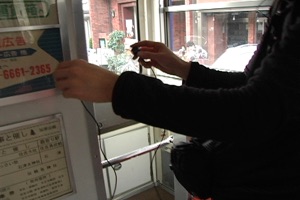
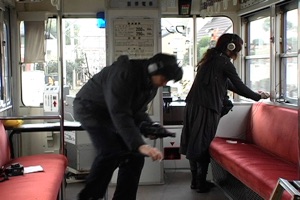

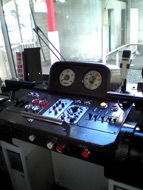

© Haco 2025. All rights reserved.

